スイレンは、ラテン語の属名ニンファエアがギリシア神話の「水の妖精」に由来。ヘラクレスに捨てられ、川に身を投げて睡蓮になりました。
The Latin genus name for Water Lily, Nymphaea, comes from the “water fairy” in Greek mythology. She was abandoned by Hercules, threw herself into the river and turned into Water Lily.
【仮名】スイレン
【和名】睡蓮
【英名】Water Lily, Hardy Water Lily, Tropical Water Lily
【学名】Nymphaea
【誕生】05/ 08, 07/ 07, 08/ 05, 08/ 08
【開花】06, 07, 08, 09月
【花色】White, Pink, Red, Purple, Violet, Blue, Yellow
スイレン
スイレンの概要
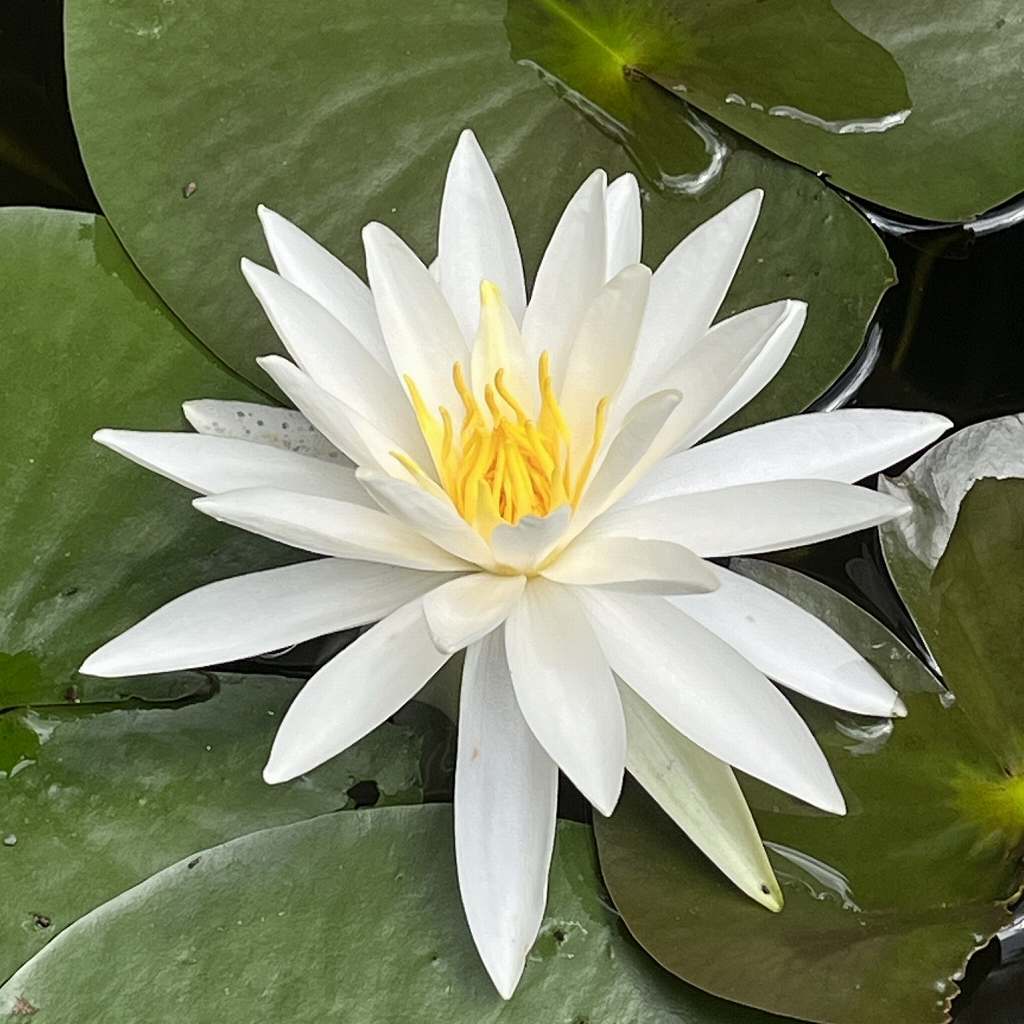
スイレンはスイレン科の水生多年草です。熱帯から温帯まで広域に50種ほどが分布。河川や湖沼で自生し、溜池や温室で栽培されます。日本では小さな白色の花が咲く「未草」のみ自生。園芸種は明治時代に渡来し、各地に広がりました。花言葉は「清純な心」「信仰」「甘美」など。
スイレンの名前
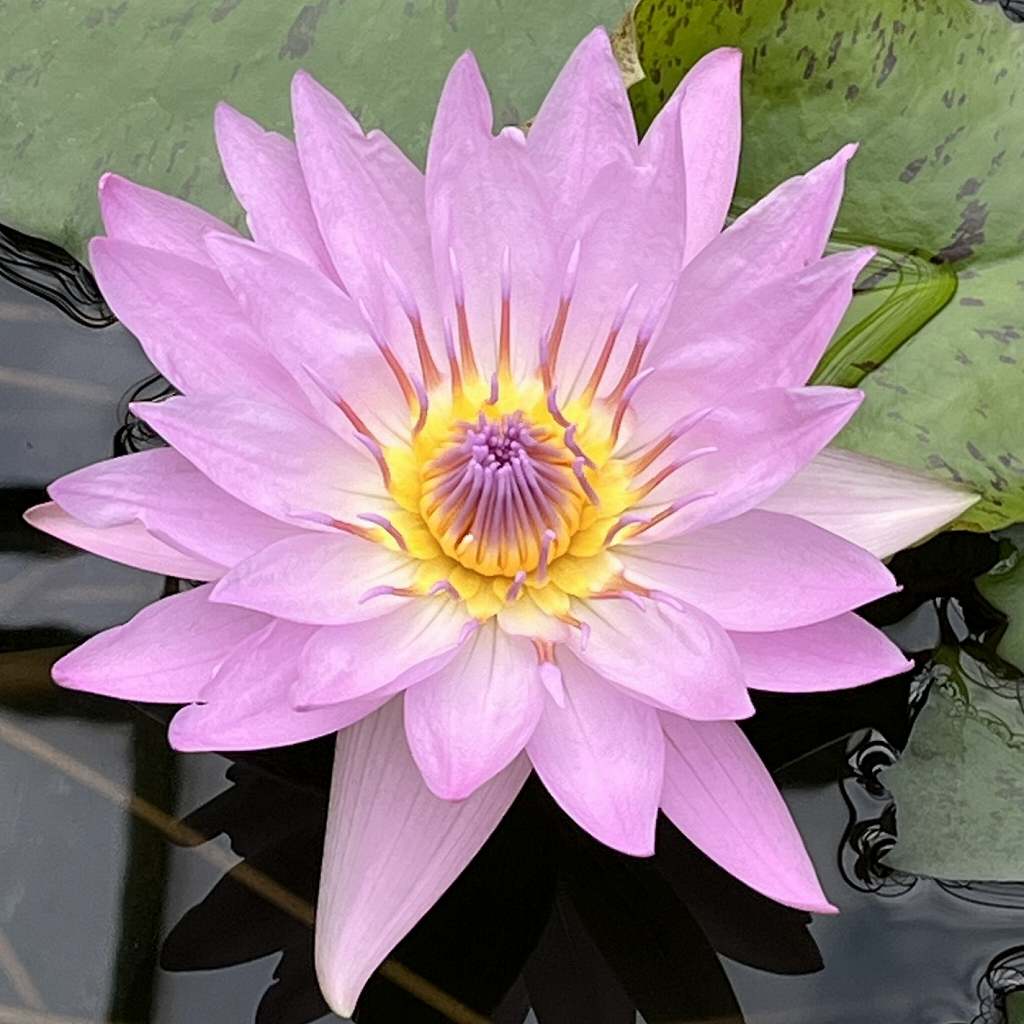
スイレンの名前の由来は漢名「睡蓮」の音読みで、「眠るハス」という意味。蓮が朝から開花する一方、午後または夜になってから開花するためです。ラテン語の属名ニンファエアはギリシア神話の「水の妖精」に由来。英雄ヘラクレスに捨てられ、川に身を投げて睡蓮になりました。
スイレンの姿形
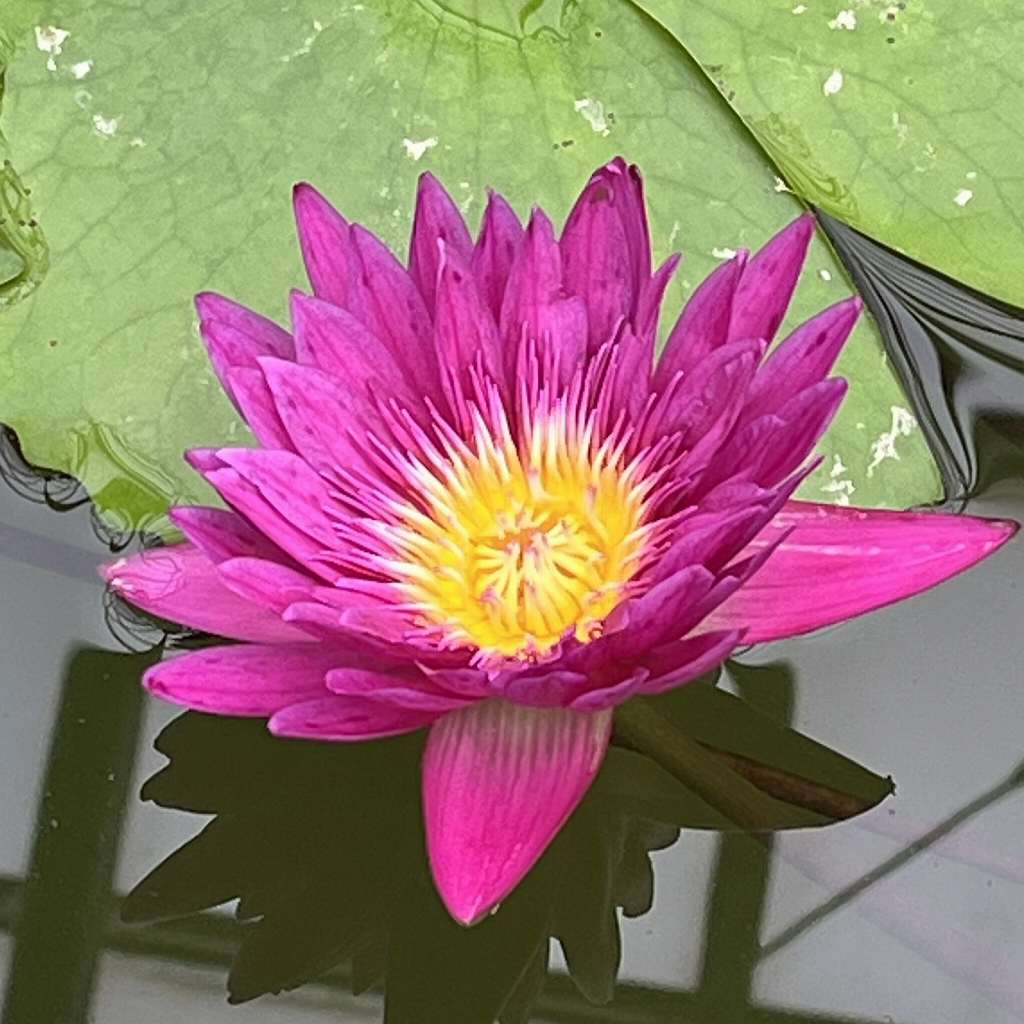
スイレンは根茎から葉柄と花柄を伸ばします。葉は水面または水上で開き、基部が深く切れ込む心形または矢じり形。花は水面または水上で咲き、花被片が螺旋状に開きます。萼片が4枚、花被片と雄しべが多数、雌性先熟で受粉。花後は液果を結び、熟すと裂けて種子を散らします。
温帯スイレン
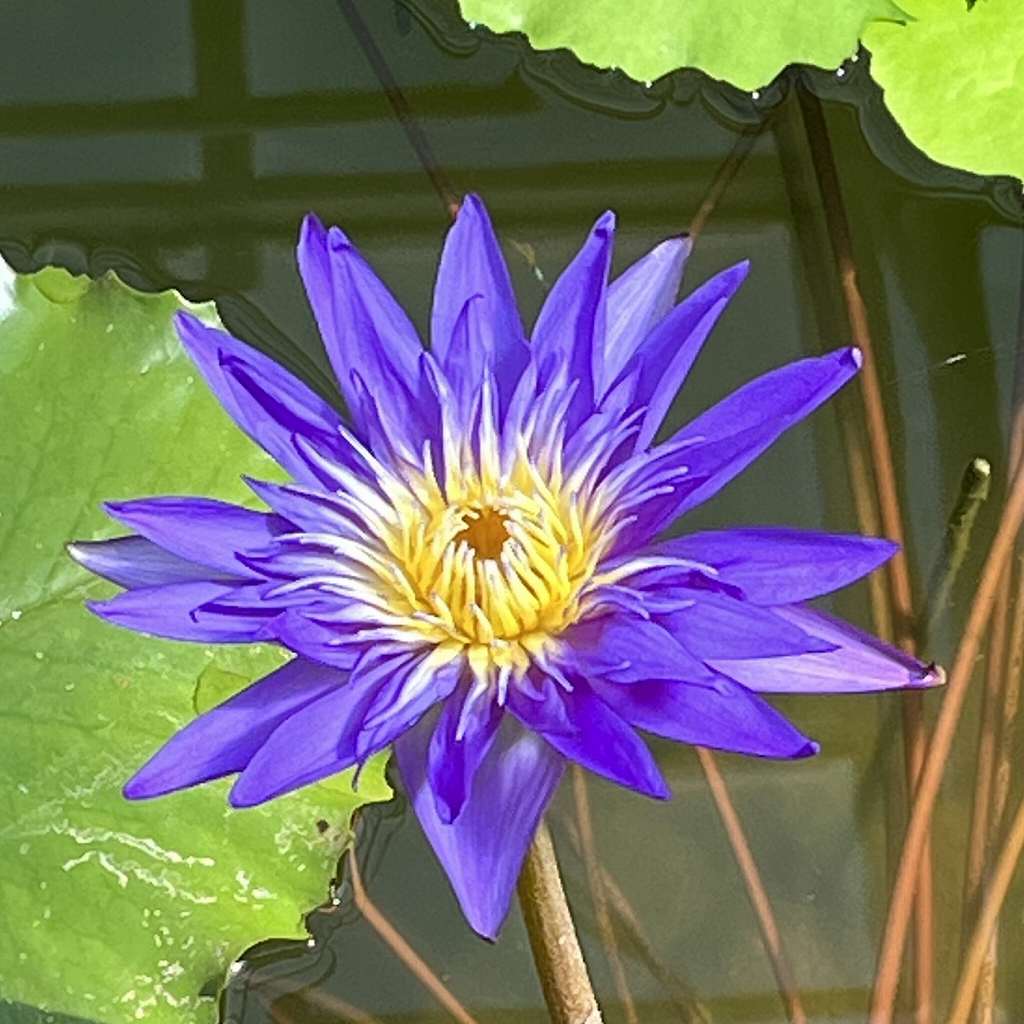
温帯スイレンは寒さに強く、屋外で育ちます。根茎は水中を這うように伸長。葉は葉柄が水面まで伸び、葉身が浮かびます。若葉は褐色の斑点模様。花も花柄が水面まで伸びて浮き、昼過ぎに開いて、夕方に閉じるのを3日間繰り返します。おもな原種は「西洋睡蓮」「匂睡蓮」など。
熱帯スイレン

熱帯スイレンは寒さに弱く、温室で育てられます。根茎は塊状で、表面に多くの突起。葉は葉柄が水上に伸び、葉身が大きく、葉縁が波打ち、葉脈が目立ちます。花も花柄が水上に伸び、花冠が大きく、色と形が豊富。夜咲きの系統もあり、強い匂いで甲虫を誘き寄せて送受粉します。
スイレンとハス

スイレンと同じ水生で、姿形が似ている「蓮」は、遠縁のハス科です。蓮の地下茎は太く連なり、中に穴が空いていて食用。葉も花も水面より高いところで開きます。葉は切れ込みの入らない円形で大きく、撥水性。花は花被片が1枚ずつ散り落ちて、蜂の巣のような花托が残ります。
Water Lily
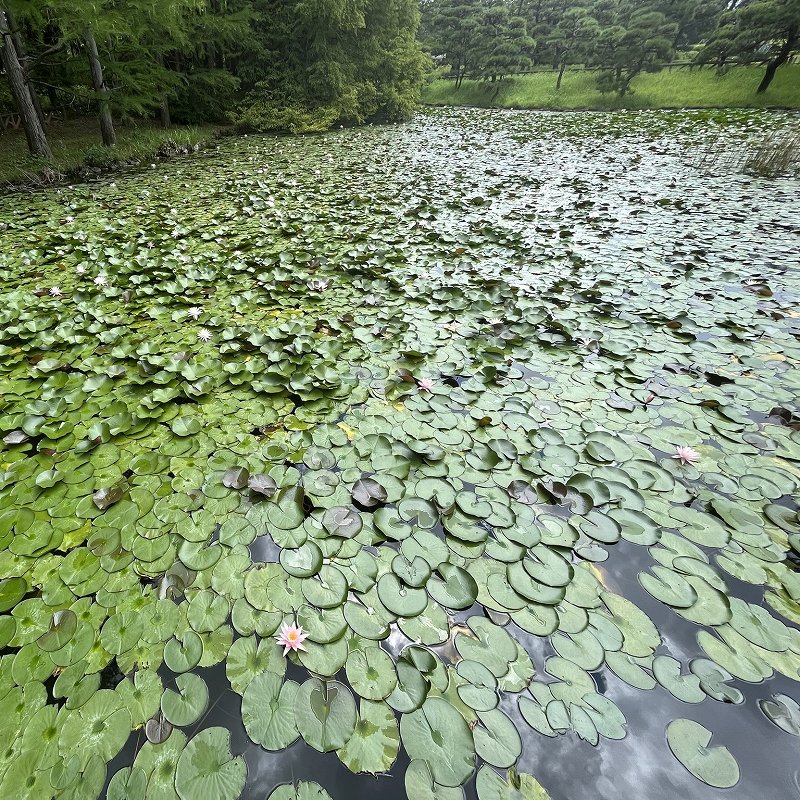
Water Lily is an aquatic perennial in the Nymphaeaceae family. Approximately 50 species are distributed over a wide range of regions, from tropical to temperate zones. It grows wild in rivers and lakes, and is cultivated in ponds and greenhouses. In Japan, only “tetragona”, which blooms with small white flowers, grows wild. The garden variety was introduced in the Meiji period and spread to various places. The language of flowers is “pure heart”, “faith”, and “sweetness”.
The Japanese name of Water Lily is derived from the Chinese name, which means “sleeping Lotus”. This is because the Lotus flowers in the morning, while the Water Lily flowers in the afternoon or evening. The Latin genus name Nymphaea comes from the “water fairy” in Greek mythology. She was abandoned by the hero Hercules and threw herself into the river to become Water Lily.
Water Lily grows petioles and flower stalks from the rhizome. The leaves open at or above the water and are heart- or arrowhead-shaped with deeply lobed bases. The flowers bloom on or above the water, with tepals opening in a spiral. It has four sepals, numerous tepals and stamens, and is pollinated by protogyny. After flowering, it forms a berry, which splits open and scatters seeds when ripe.
Hardy Water Lily is cold tolerant and grows outdoors. The rhizomes grow as if crawling through water. The petioles of the leaves extend to the water surface, and the leaf blades float. Young leaves have brown spots. The flower stalks extend to the surface of the water and float, opening in the afternoon and closing in the evening for about three days. The main species are “alba” and “odorata”.
Tropical Water Lily is sensitive to cold and can be grown in a greenhouse. The rhizome is tuberous and has many projections on its surface. The petioles of the leaves extend above the water, the leaf blades are large, the leaf edges are wavy, and the veins are noticeable. The flowers also have pedicels extending above the water, large corollas, and a wide range of colors and shapes. There are also night-blooming strains that have a strong odor that attracts beetles for pollination.
Lotus, which is aquatic and similar in appearance to Water Lily, is a distantly related member of the Nelumbonaceae family. The underground stems of Lotus are thick and have holes inside and are edible. Both leaves and flowers open above the water level. The leaves are large, round, and water-repellent. The tepals of the flowers fall off one by one, leaving behind a honeycomb-like flower receptacle.


